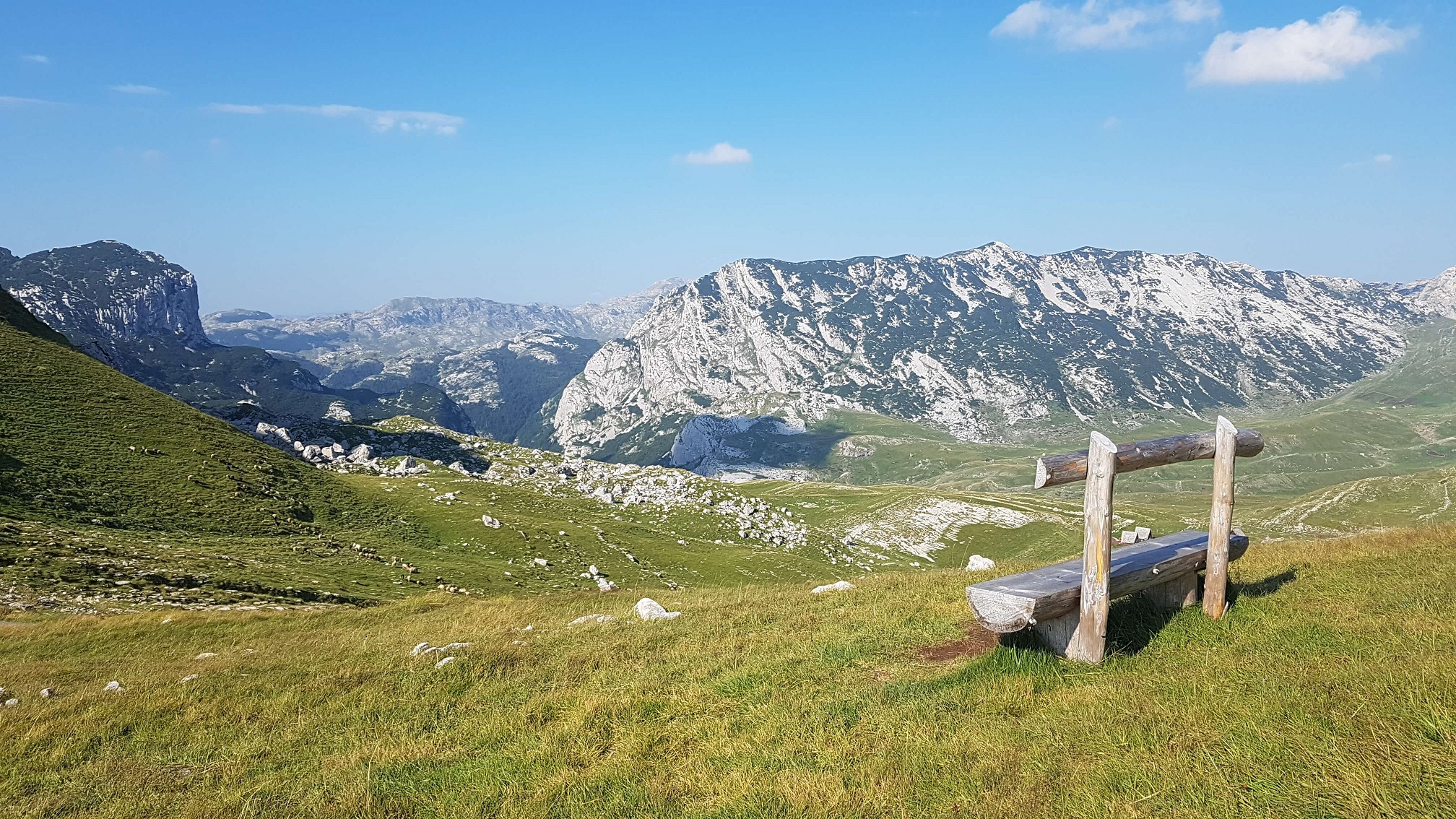
Hiking Bobotov Kuk was probably one of the most challenging and exhilarating things I did this summer (if not all year). But I learned a lot too – about myself, my comfort zone and my limits. If you’re thinking of doing the hike, you can check out my experience here.
Probably the main reason I wanted to visit Montenegro this summer was to hike in the Durmitor National Park. Buoyed by my recent experience of hiking in Valbone Valley in Northern Albania, we set our sights on tackling Bobotov Kuk, formerly thought to be the country’s highest peak (another mountain on the border with Albania was subsequently found to be just 11 metres higher).
For my two-week itinerary through the Balkans, click here.
So how was it? A bit terrifying.
At least that’s the first thought that still comes to mind, followed by amazing, challenging, exhausting, satisfying and amazing again. Ultimately, it was an incredible experience and I’m very happy and proud I did it, but if I’m being honest, this hike just really wasn’t suitable for me.
Here’s how the day unfolded (as brought to you by my Instagram stories).

Sedlo Pass – the start of our route
Hiking to the top of Bobotov Kuk: the route
Staying at Hikers’ Den in Žabljak, we began our morning with a briefing from owner Alex, who is a knowledgeable hiker, as well as a member of the local mountain rescue service. He told us all about the dangers of the route (loose scree, the threat of rain etc) and how to avoid them. We then set off in a little minibus to Sedlo Pass, where the trail begins.
Sedlo Pass itself is actually located at 1,907m (6,256ft) above sea level, leaving ‘only’ a total of 616m (2,022ft) to hike. The peak of Bobotov Kuk itself is 2,523m (8,278ft).
From here, we began the hike. The trail starts with a bang: ascending 300m in a distance of just 400m, part of which included a scramble over open rockface with the help of some cables and convenient footholds.
After this challenging introduction, my hiking companion had to admit defeat: she had been feeling under the weather all morning (due in part to both Sarajevo and Žabljak being far colder in late August than we had anticipated, in addition to our lack of appropriate (i.e. warm) clothing). We both agreed I should continue on while she turned back.
From this point, the hike becomes a lot more manageable. The path menders through some grassy hillside peppered with wild flowers and rock debris from the towering peaks all around. However, the path also begins to treacherously descend. (I say treacherously because I knew full well that every metre I went down, I would have to make up for later on.)
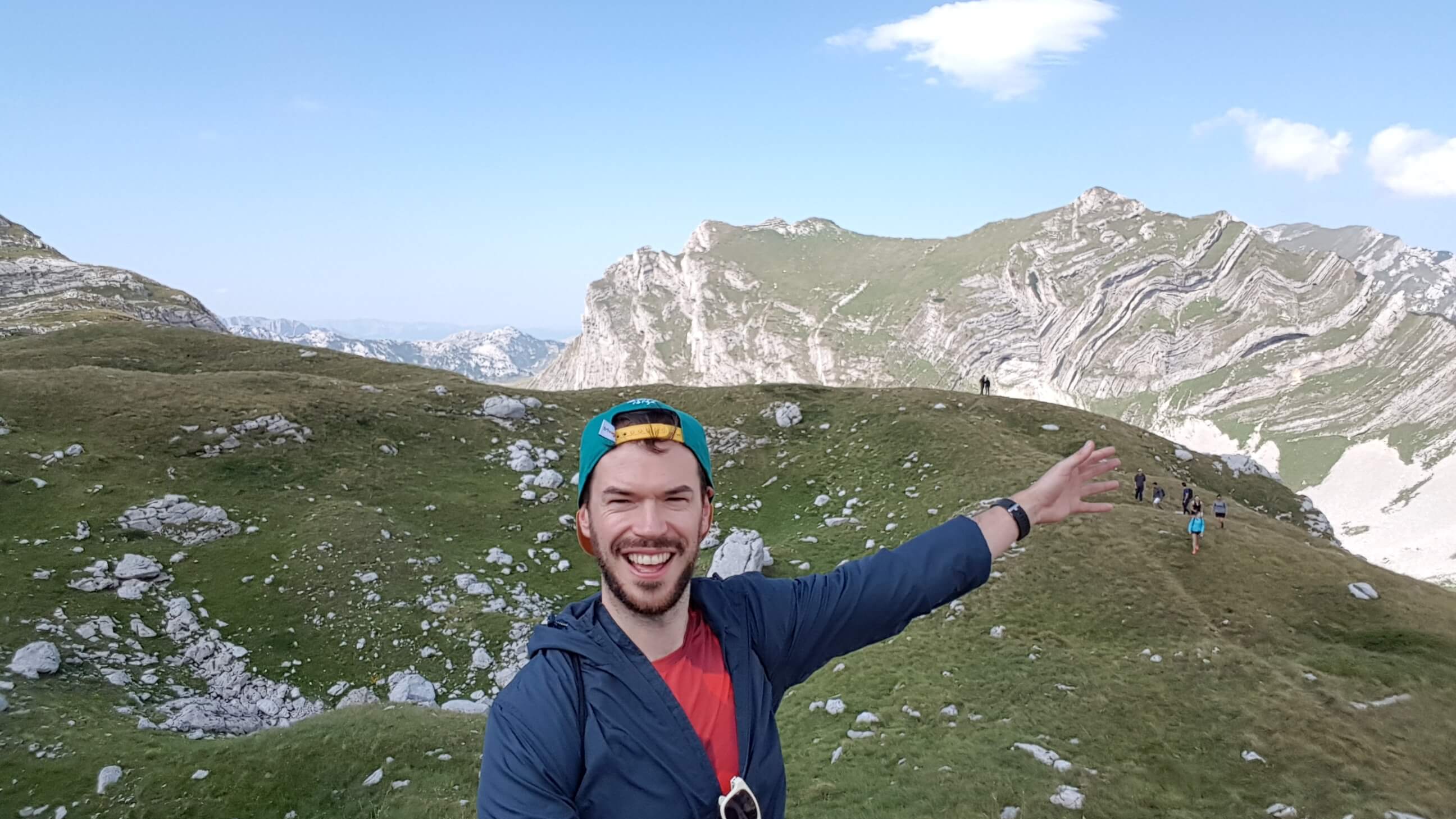
About an hour and a half into the hike, the valley opens up to a large mountain field surrounded by beautiful mountains. Here is the perfect spot for some ‘King of the Mountains’ selfies. In all seriousness though, it is well worth pausing to take in the view, which is seriously impressive. On one side you have jagged knife-edge peaks, on the other a section where different layers of rock have been pushed up from the ground like a poorly-rolled carpet. (The correct geological terminology, I’m sure). These are both in contrast to the green rolling hillock you are standing on.
From here you can also spot the first glimpse of the peak of Bobotov Kuk, although it is much easier to recognise after you’ve climbed it. It doesn’t look like much from here, but its almost dome-like peak protrudes just slightly from the highest horizon; a broad, wide ridge.
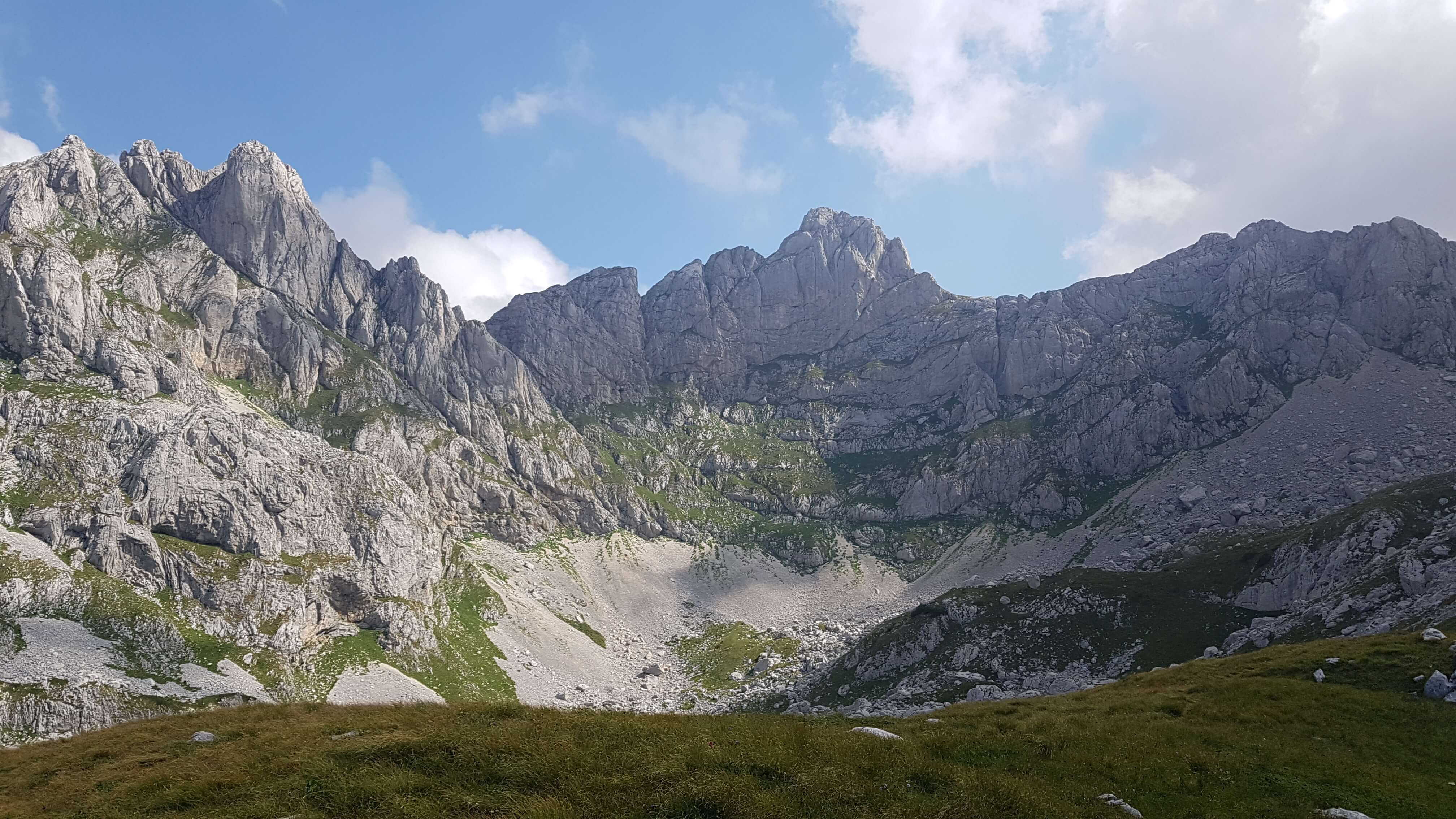
From here, you descend once again, climbing over rocks and skirting the edge of a small mountain lake formed by a natural spring, although by mid-August many of the flowing springs had already dried up – summers are short in the mountains.
Now you are situated at the lowest point of the route. And as they say: the only way is up.
Here is where the hike got interesting – a long, hard slog uphill, including several different sections of scrambling over rocks. Cables are there at the more challenging or steeper sections, otherwise it’s a hands-and-knees job. I took this section at a steady pace with frequent but brief pauses (I didn’t sit down for fear that it would take too long to get back up again). Despite the challenging terrain, this was the part of the hike I liked most: it was every bit as rewarding as it was challenging, affording you frequent views back to the start of the ascent to show you just how far you’d come. The frequent cold breeze was pretty refreshing, too.
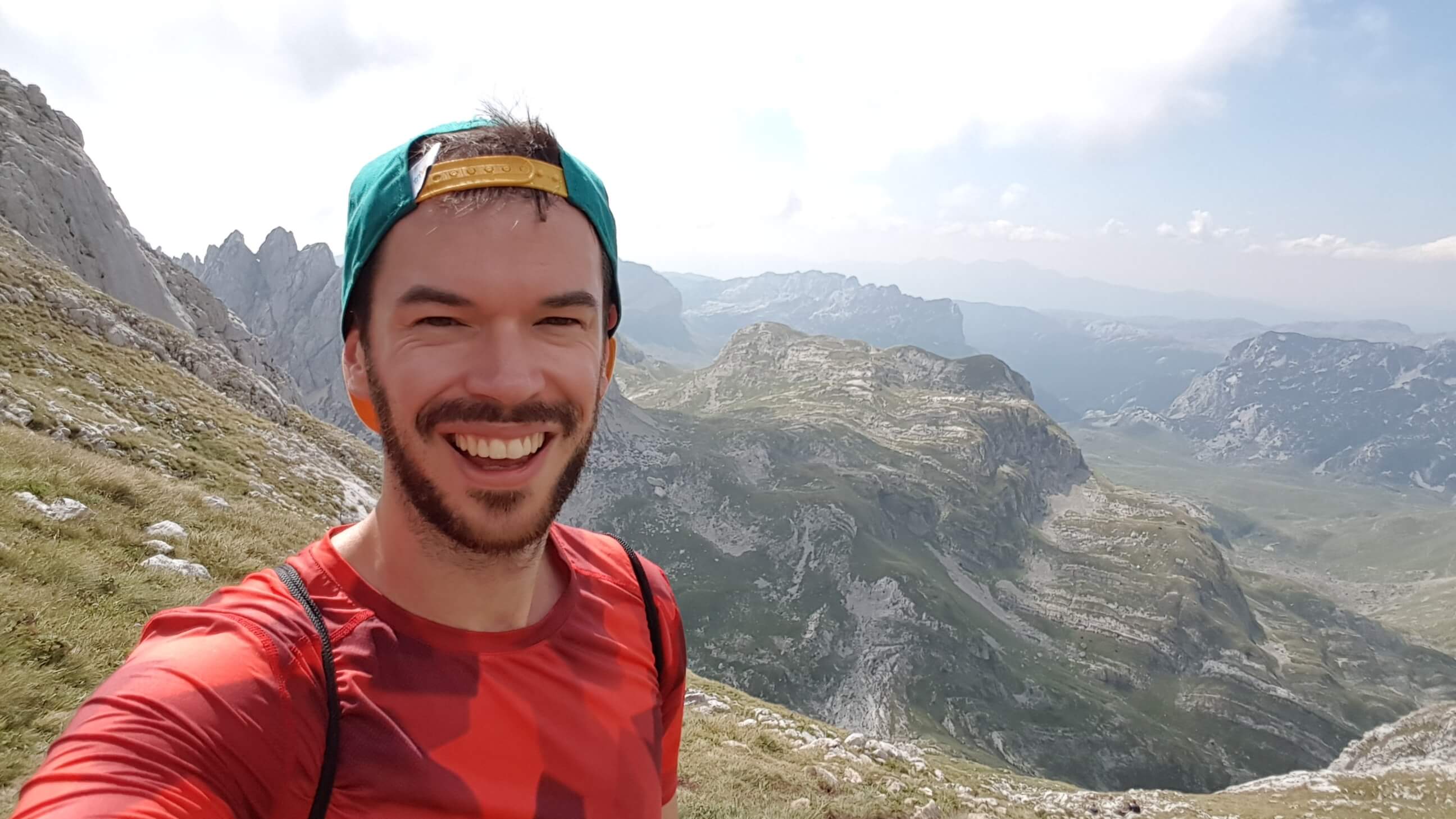
Half way up the ascent…
When you finally reach the ridge, you have some awesome views, both of the final peak of Bobotov Kuk, as well as the deep valleys on either side.
I pressed on and soon found myself at the start of the final summit. Alex had told us that here 1 in 5 people turn back due to vertigo, which is a much safer option than attempting the final stretch if you’re not up to it. At this point I felt OK and pushed on. I then came to the final section where you are forced to continue one-by-one across a narrow ledge, hugging the cables nailed into the rockface. Again, I did this with surprising ease.
I was then faced with one final scramble over rock to reach the summit, about three metres above me. I was a bit uncertain of this last part, as no-one was ahead of me to ‘show me the way’ and I had no-one to follow. So I decided to sit down on a rock just off the path, next to a Russian couple. This was a terrible mistake.
As I sat there, gazing down at a lake in the neighbouring valley probably a thousand metres below, I felt myself trying to push back into the rockface behind me because I had the feeling of being trapped high up on a ledge. I had a sensation in the pit of my stomach and as I was calmly opening the croissant I’d brought with me, I realised I was too terrified to eat it. In fact, I had exactly the same feeling of pure terror in my stomach as I’ve had during films when the camera pans over a ledge or when a character is shown on the ledge of a skyscraper. I’ve even had the same feeling in nightmares before now. I’ve never had a panic attack, but I am assuming this is the closest I’ve ever had to having one.

I knew I had to calmly but quickly get myself out of there. Luckily the cables to get down were clear (you have to go one at a time so queues form quickly), so I quietly and calmly packed up my un-eaten croissant (this croissant was a really important motivational factor for me) and got myself back down to the ridge located just below the peak.
There I could eat my croissant and feel myself relax noticeably. I also almost got stung by a wasp, which was infuriating (imagine hiking a fucking mountain to get stung by a bloody wasp).
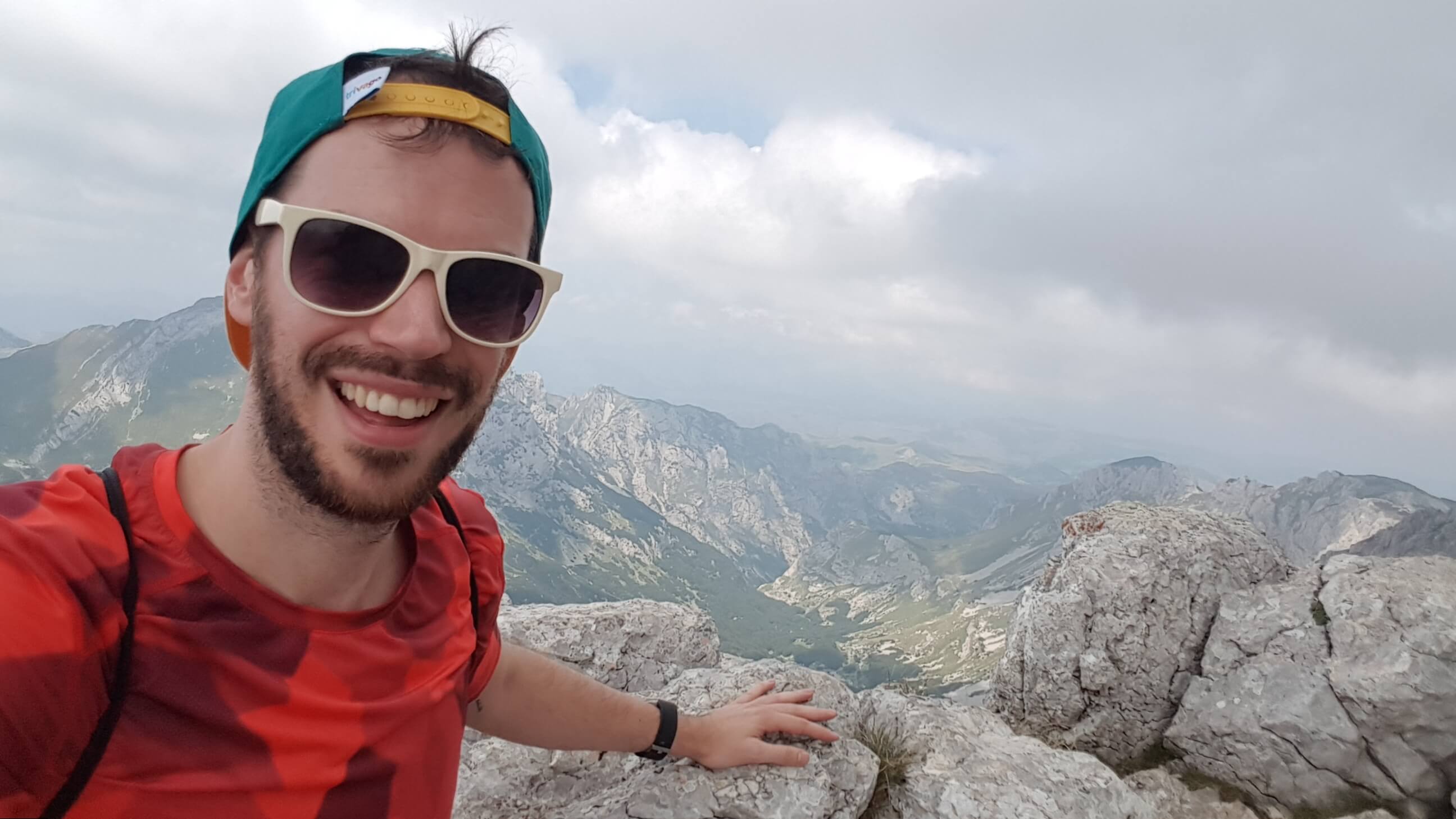
Smiling again lower down. But still clinging to the rock for dear life.
From here I began the descent which was nowhere near as bad as I had imagined when making my way up. The rest of the hike would have been largely uneventful, had I not casually bumped into Nicky, who had – despite not feeling 100% – pushed on at a much slower pace and managed to reach the ridge.
Read more: Hiking in Durmitor National Park – a guide to Zabljak
Looking back on Bobotov Kuk
So did I reach the summit of Bobotov Kuk? Technically no, as I was about three metres shy.
Do I regret the climb? Also no. Despite the terror, I still have a huge feeling of accomplishment for getting to where I did (all by myself too) and I can be happy that I now know for sure what my limits are: mountain climbing is definitely not for me. (But hiking in the mountains is different thing entirely…)
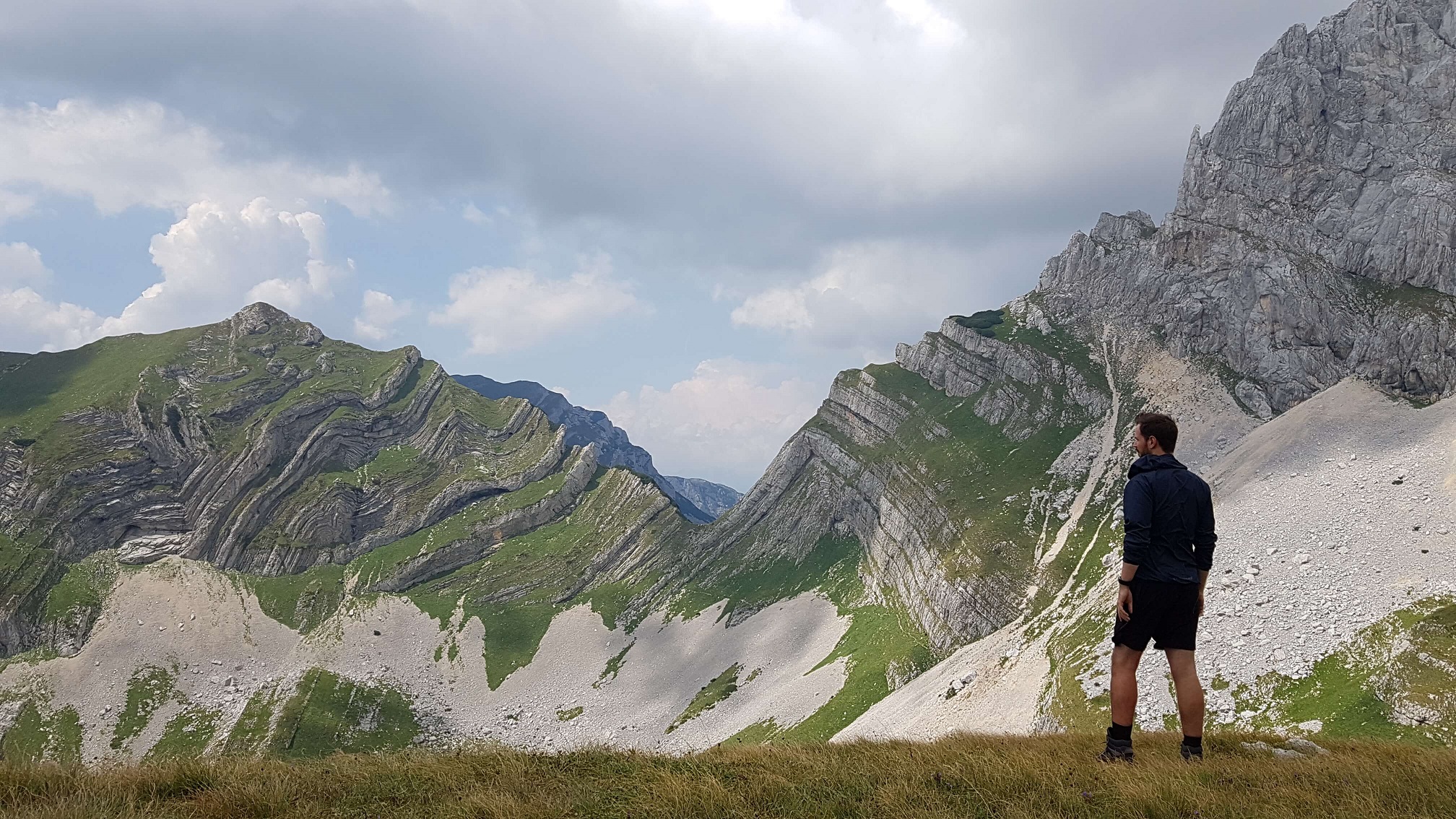
Climbing Bobotov Kuk with vertigo
So should I have set out to conquer Bobotov Kuk? Probably not, in all honesty. At this point I don’t want to come across as unprepared – I’d read several blog posts about the climb (here is a great example from The Sandy Feet) and even trawled through grainy GoPro footage on YouTube – all of which talked about how rewarding and achievable the climb was (I’m pretty sure I read somewhere that babies and the elderly could do it easily, which is total bullshit). But what I was forgetting is that they weren’t talking to me. That is to say: a keen hiker with a fear of sheer drops and high ledges was definitely not the target audience for these posts. The climb is rewarding and it is achievable, but it is also pretty damn frightening.
So should you attempt the climb yourself if you have a fear of heights? Only you can answer that, but you should be very honest with yourself about what you are comfortable with and what your limits are. It’s very easy to get caught up in the excitement and adrenaline, but you have to be prepared that you might not be totally OK up there.
Simply put, I enjoyed the ascent and the climb but probably should have known my limits and set my sights no further than the ridge. But ultimately, I am hugely impressed with myself for doing what I did. And I got some excellent photos out of it. But next time, I will be looking for more mountain hikes which keep me firmly in my comfort zone. With my croissant.


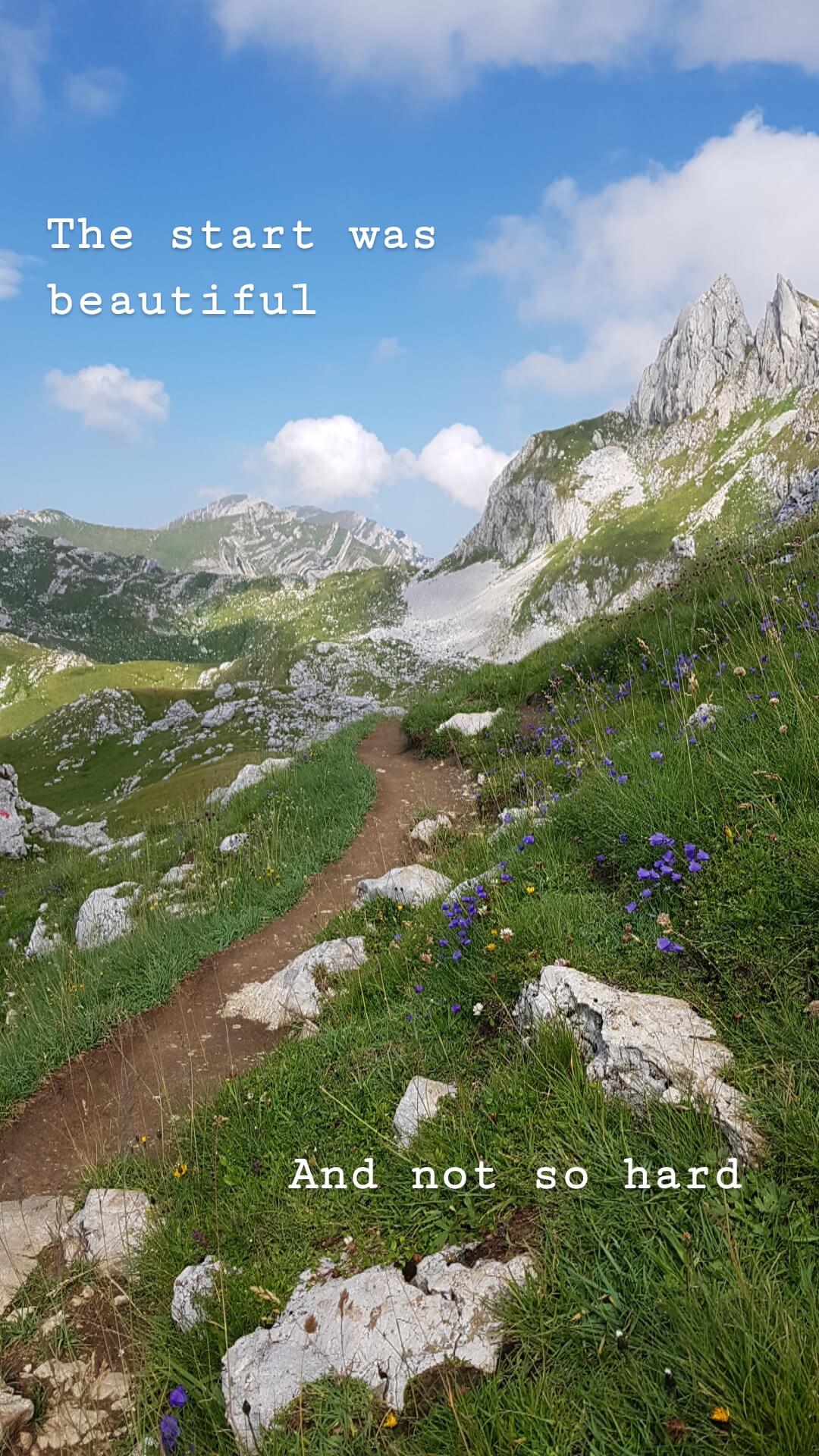
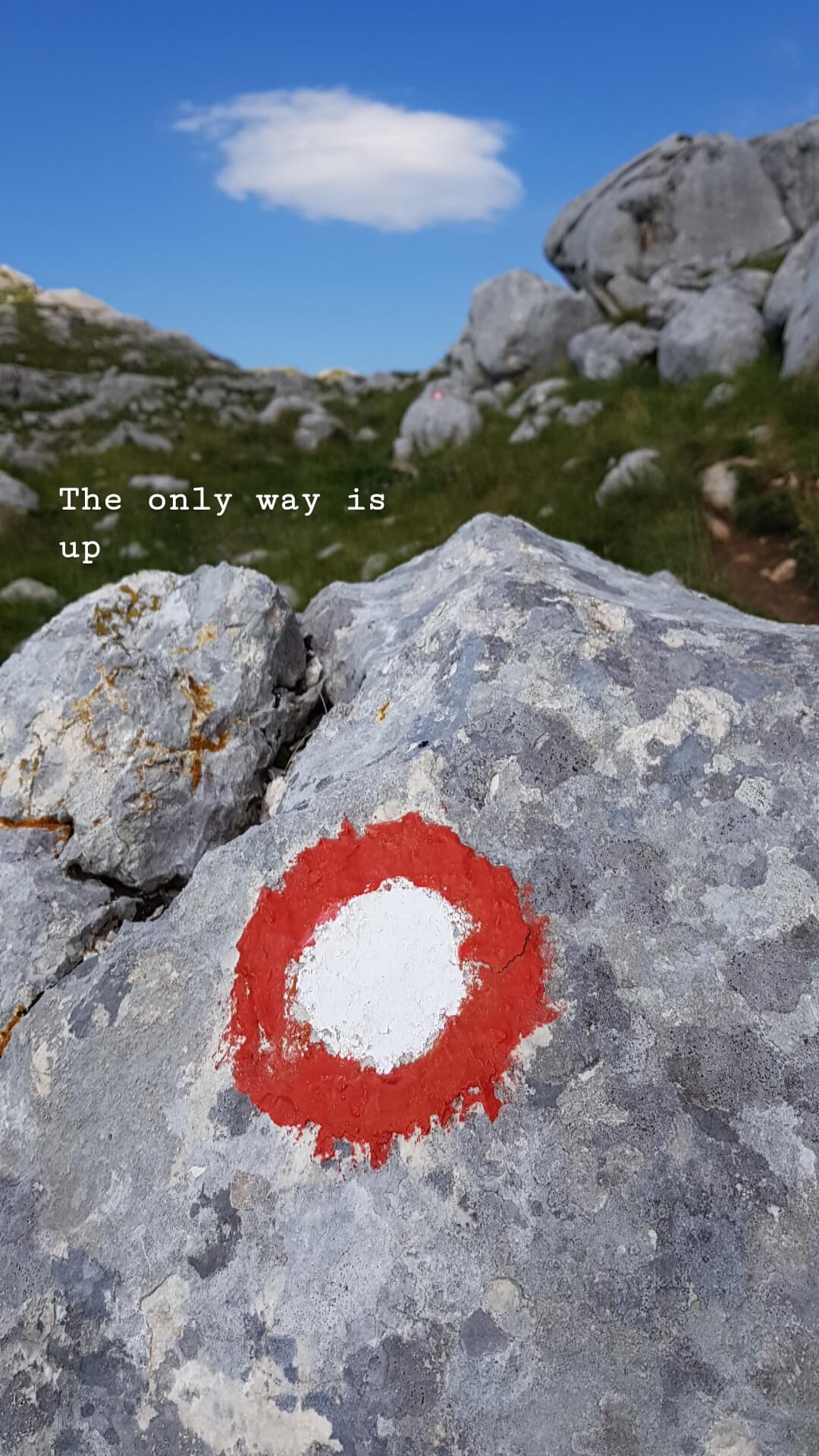
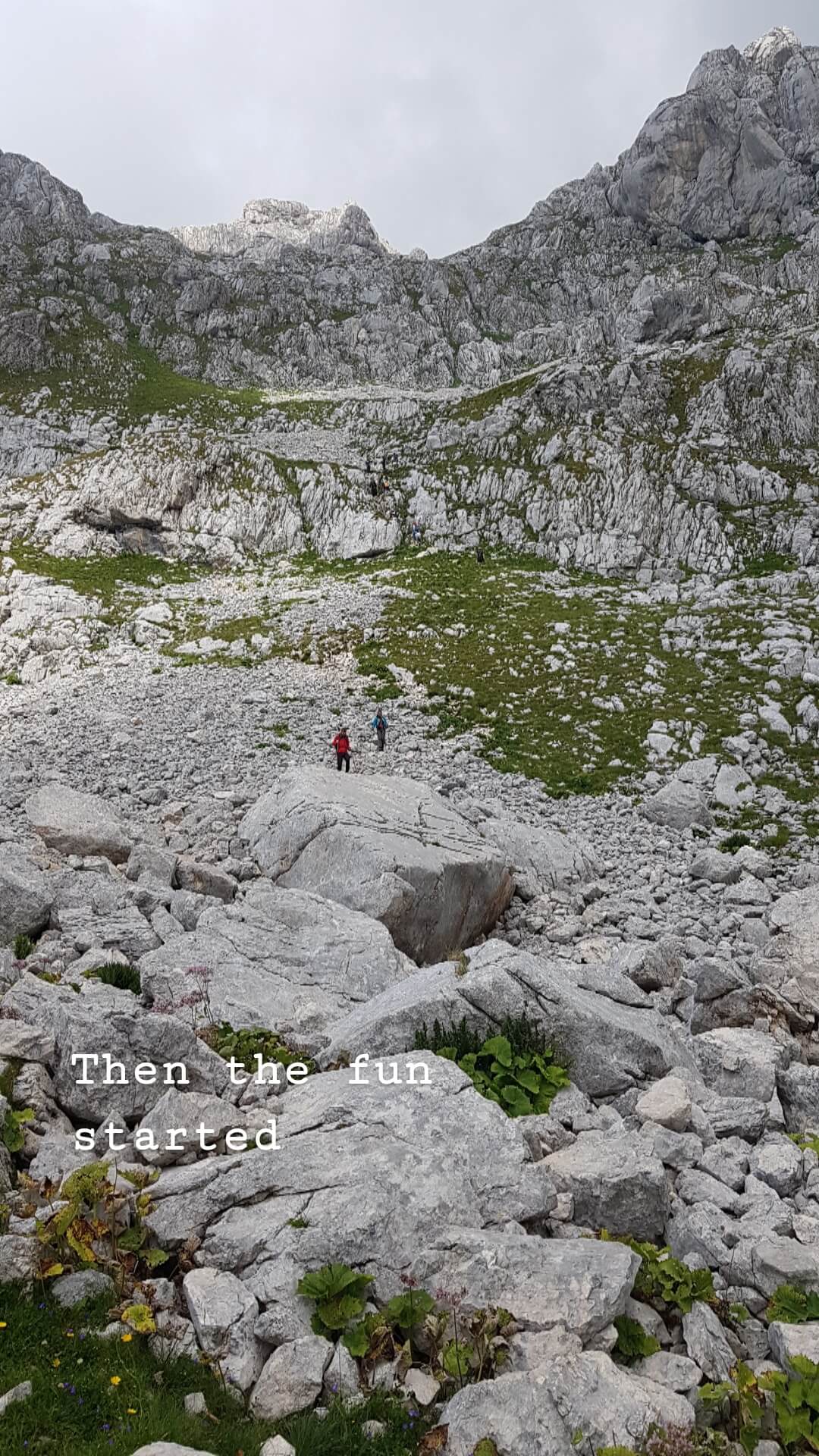
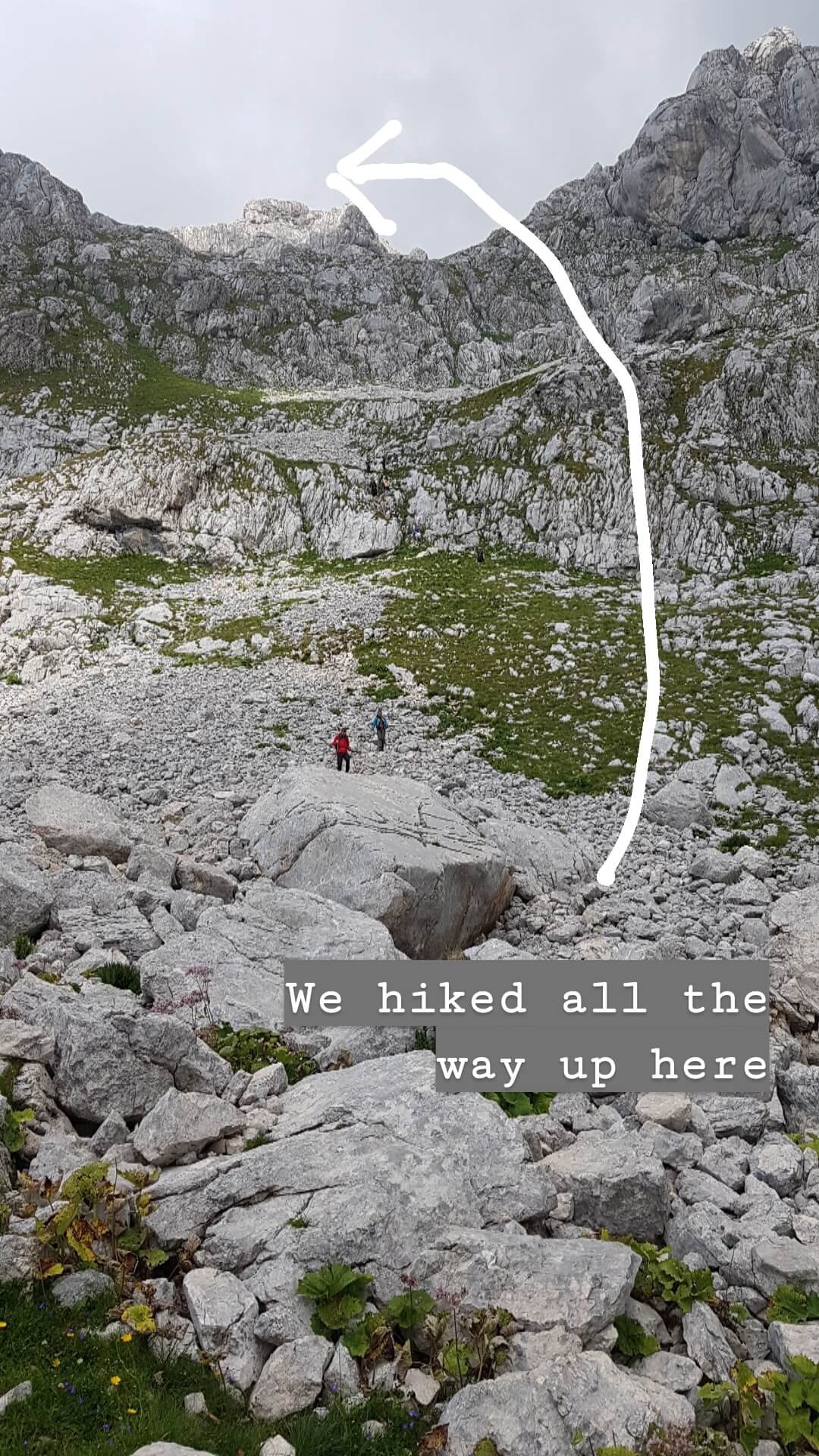
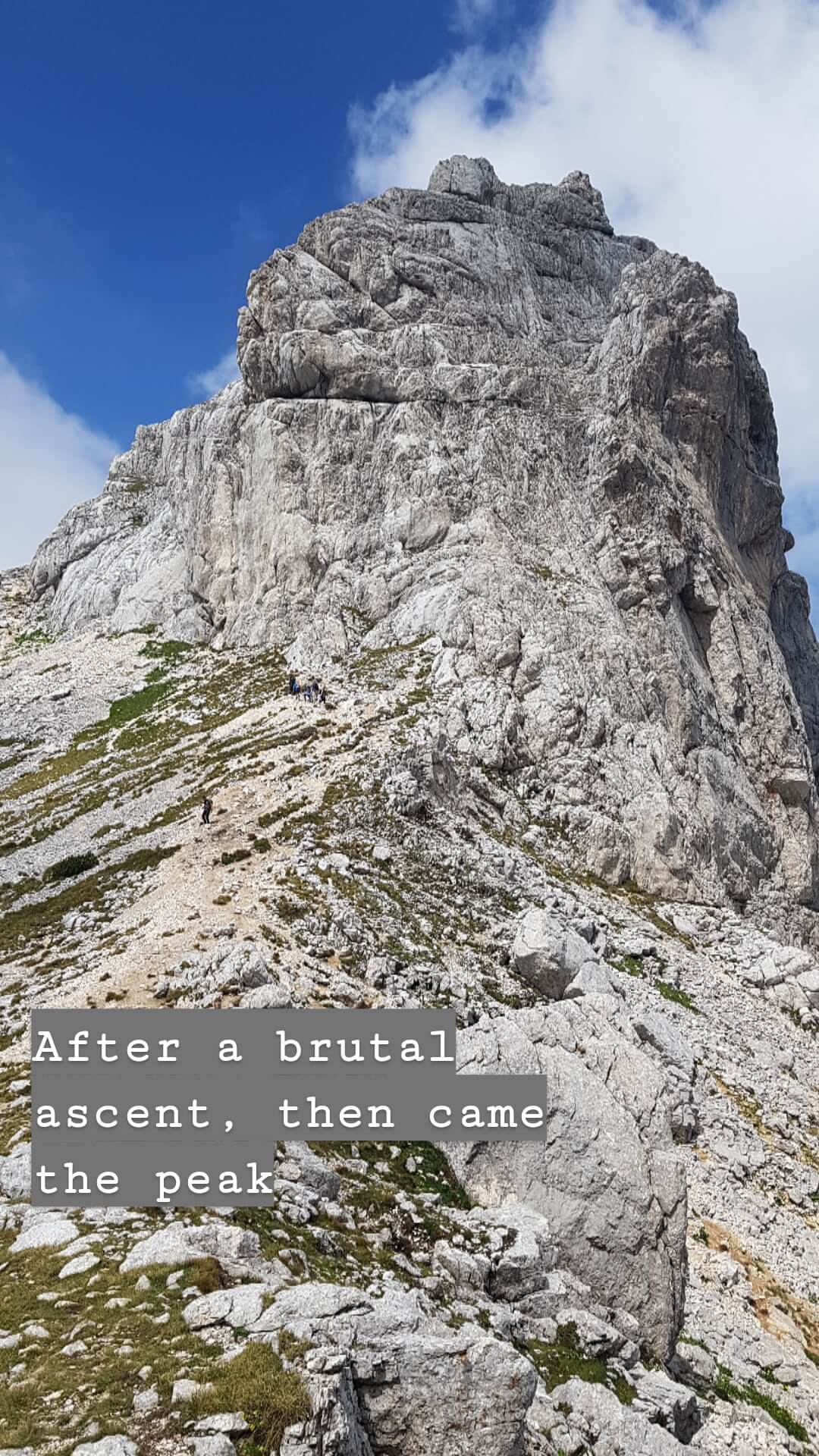
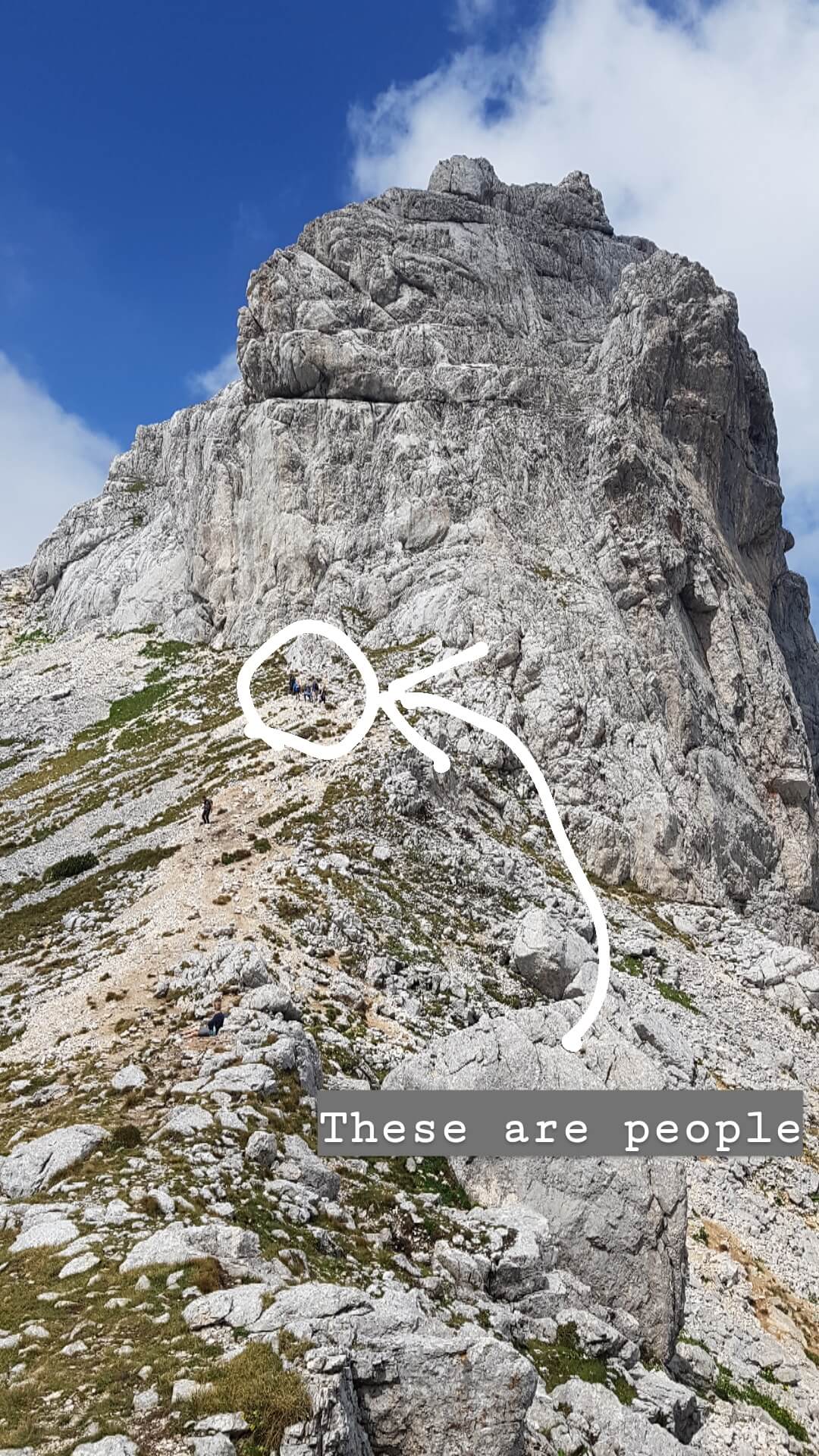
Fascinating!
Thanks for sharing the experiences and good on you that the wasp didn’t get you in the end.
Glad you liked the post, Sabina. And yes, I would have been absolutely fuming if I’d managed to get stung the one time I climbed a mountain!
Well done John. A great read and a brilliant experience for you.
Makes getting stuck in that bog near Criccieth an everyday occurrence!
Scaling Durmitor’s heights: where rock meets adventure, nature applauds
It was certainly an unforgettable experience for me!